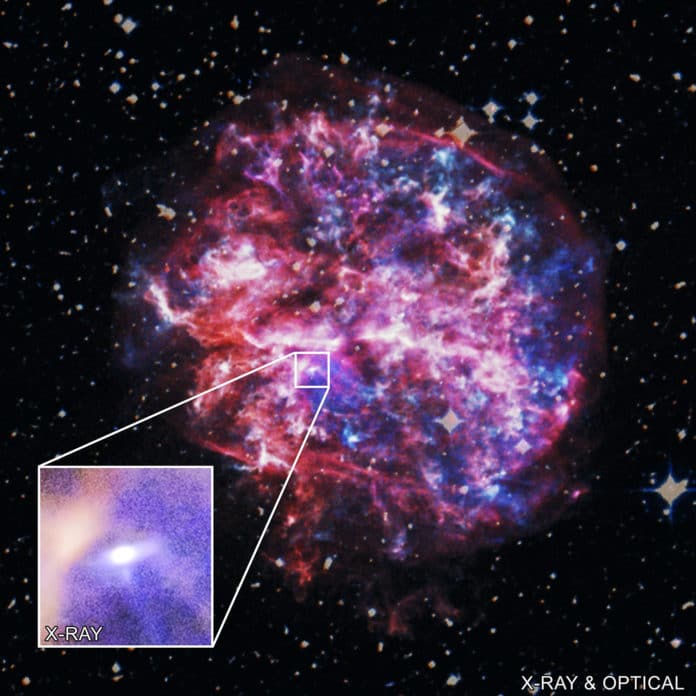Pulsars are rapidly spinning neutron stars, highly dense stars composed almost entirely of neutrons. They are formed when massive stars run out of fuel, collapse, and explode.
Recently, NASA’s Chandra X-ray Observatory spotted a young pulsar blazing through the Milky Way at a speed of around a million miles per hour. This pulsar is one of the fastest objects of its kind ever seen.
Chandra observed the pulsar racing through the remnants of the supernova that formed it, G292.0+1.8, around 20,000 light-years away from Earth. The speed of this pulsar is almost 30% higher than a previous estimate of the pulsar’s speed. This speed indicates that the G292.0+1.8 and its pulsar may be significantly younger than astronomers previously thought.
Xi Long of the Center for Astrophysics | Harvard & Smithsonian (CfA), who led the study, said, “We directly saw the motion of the pulsar in X-rays, something we could only do with Chandra’s very sharp vision. Because it is so distant, we had to measure the equivalent of the width of a quarter about 15 miles away to see this motion.”
Scientists made this discovery after comparing Chandra images of G292.0+1.8 taken in 2006 and 2016. They noticed the change in position of the pulsar over the 10 years. On that basis, they calculated the moving speed of the pulsar by determining how far it was from the explosion’s center. They found that the pulsar is moving at least 1.4 million miles per hour from the center of the supernova remnant to the lower left.
The research team also estimated that the supernova G292.0+1.8 would have exploded about 2,000 years ago as seen from Earth rather than 3,000 years ago as previously calculated.
Co-author Daniel Patnaude, also of the CfA, said, “We only have a handful of supernova explosions that also have a reliable historical record tied to them, so we wanted to check if G292.0+1.8 could be added to this group.”
The team also determined- how the supernova gave the pulsar a powerful kick? There are two basic scenarios, both of which involve material not being expelled evenly in all directions by the explosion. One theory is that neutrinos produced in the explosion are ejected asymmetrically, while another is that the explosion’s debris is ejected asymmetrically. Because of the conservation of momentum principle, the pulsar will be kicked in the opposite direction if the material has a favored direction.
The amount of asymmetry of neutrinos required to explain the high speed in this latest result would be extreme, supporting the explanation that asymmetry in the explosion debris gave the pulsar its kick. This agrees with a previous observation that the pulsar is moving opposite from the bulk of the X-ray-emitting gas.
The energy imparted to the pulsar from this explosion was gigantic. Although only about 10 miles across, the pulsar’s mass is 500,000 times that of Earth, traveling 20 times faster than Earth’s speed orbiting the Sun.
Co-author Paul Plucinsky, also of CfA, said, “This pulsar is about 200 million times more energetic than Earth’s motion around the Sun. It appears to have received its powerful kick just because the supernova explosion was asymmetric.”
Journal Reference:
- Xi Long, Daniel J. Patnaude et al. The Proper Motion of the Pulsar J1124-5916 in the Galactic Supernova Remnant G292.0+1.8. DOI: 10.48550/arXiv.2205.07951
